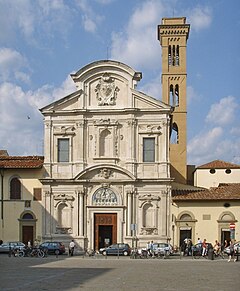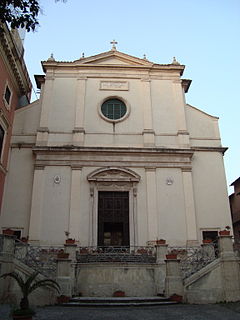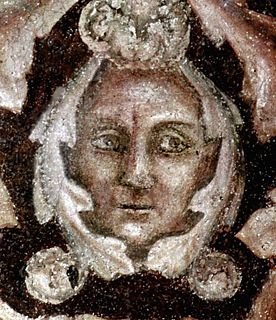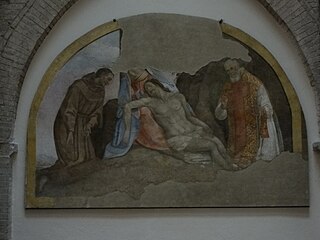
The Chiesa Nuova is a church in Assisi, Italy, built in 1615 on the site of the presumed [1] birthplace of St. Francis, the house of Pietro di Bernardone. It was then called Chiesa Nuova because it was the last church to be built in Assisi at that time.

Assisi is a town and comune of Italy in the Province of Perugia in the Umbria region, on the western flank of Monte Subasio.
It was erected because, during a visit to Assisi in 1613, Antonio de Trejo, the Spanish Vicar General of the Franciscans, was saddened when he saw the original home of St. Francis becoming dilapidated. With the help of the Spanish Embassy in Rome and through a generous gift of 6,000 ducats by King Philip III of Spain, he was able to buy the house.

The ducat was a gold or silver coin used as a trade coin in Europe from the later Middle Ages until as late as the 20th century. Many types of ducats had various metallic content and purchasing power throughout the period. The gold ducat of Venice gained wide international acceptance, like the medieval Byzantine hyperpyron and the Florentine florin, or the modern British Pound sterling and the United States dollar.

Philip III was King of Spain. He was also, as Philip II, King of Portugal, Naples, Sicily and Sardinia and Duke of Milan from 1598 until his death.

Pope Paul V authenticated this purchase on 10 July 1615 and blessed the first stone. On 20 September 1615 this foundation stone was then brought, in a solemn procession, from the Cathedral of San Rufino to the building site. [2] The church was built under the supervision of brother Rufino di Cerchiara, who was perhaps also the architect. [3]
The church, built in late Renaissance style, features a high dome divided in coffers, with lantern and a drum. Such a caisson ceiling is a feature of Renaissance architecture. The plan is a Greek cross one, with nave and transepts of the same length, inspired by the church of Sant'Eligio degli Orefici in Rome, one of the few churches designed and built by Raphael. The church is decorated with frescoes by Cesare Sermei and Giacomo Giorgetti (17th century).

The Renaissance is a period in European history, covering the span between the 14th and 17th centuries and marking the transition from the Middle Ages to modernity. The traditional view focuses more on the early modern aspects of the Renaissance and argues that it was a break from the past, but many historians today focus more on its medieval aspects and argue that it was an extension of the middle ages.
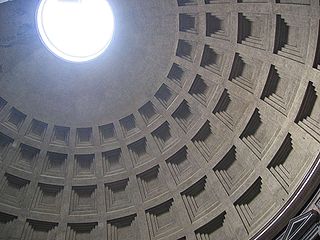
A coffer in architecture is a series of sunken panels in the shape of a square, rectangle, or octagon in a ceiling, soffit or vault. A series of these sunken panels was often used as decoration for a ceiling or a vault, also called caissons ('boxes"), or lacunaria, so that a coffered ceiling can be called a lacunar ceiling: the strength of the structure is in the framework of the coffers.

The drum is a member of the percussion group of musical instruments. In the Hornbostel-Sachs classification system, it is a membranophone. Drums consist of at least one membrane, called a drumhead or drum skin, that is stretched over a shell and struck, either directly with the player's hands, or with a percussion mallet, to produce sound. There is usually a resonance head on the underside of the drum, typically tuned to a slightly lower pitch than the top drumhead. Other techniques have been used to cause drums to make sound, such as the thumb roll. Drums are the world's oldest and most ubiquitous musical instruments, and the basic design has remained virtually unchanged for thousands of years.
The high altar was set over the room of St. Francis. One can also visit the shop where Francis sold his cloth and the stairwell in which Francis was imprisoned by his father. This is the place where Francis decided to answer the divine call and to renounce worldly goods.
The adjoining friary houses a museum and an important Franciscan library with many codices and rare books.

A codex, plural codices, is a book constructed of a number of sheets of paper, vellum, papyrus, or similar materials. The term is now usually only used of manuscript books, with hand-written contents, but describes the format that is now near-universal for printed books in the Western world. The book is usually bound by stacking the pages and fixing one edge to a spine, which may just be thicker paper, or with stiff boards, called a hardback, or in elaborate historical examples a treasure binding.






